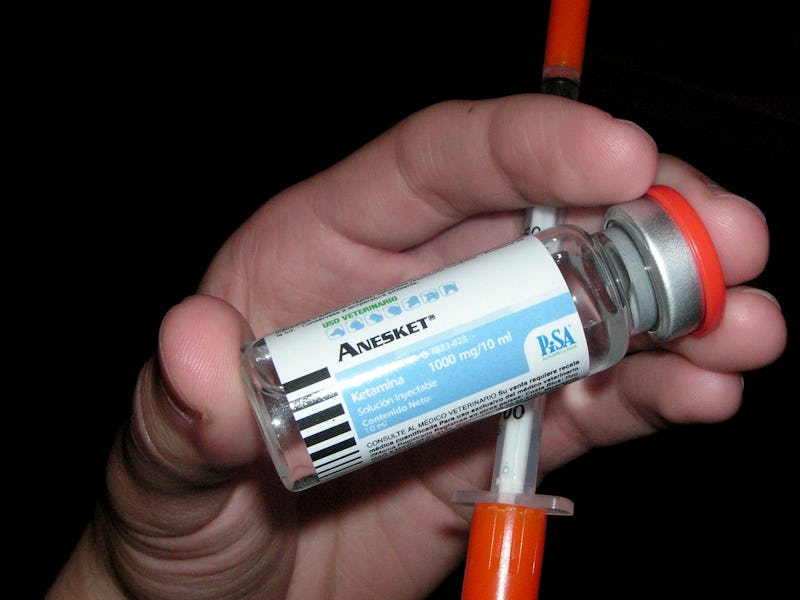Doctors May Have Found a New Use for the Powerful Party Drug Ketamine
Ketamine might be able to clean up its image.

The powerful dissociative tranquilizer drug ketamine, which has been a raver mainstay for decades and can cause serious adverse effects if misused, doesn’t have the best reputation. But doctors have been working hard to change that, especially in light of the drug’s potential to treat depression, and there may be a new medical use for ketamine on the horizon.
In a talk at the Anesthesiology Annual Meeting on Friday in Boston, Eric Schwenk, M.D., presented research that he co-authored on the potential for ketamine to treat severe migraines. Schwenk is the director of orthopedic anesthesia at Thomas Jefferson University Hospital in Philadelphia, where patients will soon begin to receive treatment for their migraines.
Perhaps best known for its abuse potential, ketamine has emerged as a promising therapeutic drug.
To determine whether ketamine could help give relief to people who suffer from migraines, Schwenk and his colleagues gave them low doses of the drug. Ketamine was originally developed as a general anesthetic, which means it renders people fully unconscious, but at lower doses, it is highly effective at managing pain. In the study, 61 patients received intravenous ketamine during inpatient treatment for migraines. Some 75 percent of the patients experienced improvements in their migraine intensity after a three- to seven-day course of treatment. Migraines are a serious problem in the United States: 13 percent of adults in the country suffer from them, with women being disproportionately affected.
“Ketamine may hold promise as a treatment for migraine headaches in patients who have failed other treatments,” said Schwenk in a statement about the study, which has not yet been published. “Our study focused only on short-term relief, but it is encouraging that this treatment might have the potential to help patients long-term. Our work provides the basis for future, prospective studies that involve larger numbers of patients.”
Naturally, a medical treatment requires extensive testing before doctors can call it effective. But fortunately, ketamine has a long history of medical use, which means doctors have had a lot of time to learn about dosages, effects, and side effects. Plus, ketamine is quite inexpensive.
Ketamine, which can create euphoric intoxication at low to medium doses, has been used as a party drug for many years. The fact that it’s a Schedule III narcotic (the same status as codeine) has made diverted ketamine readily available on the black market. This popularity tarnished the medication’s reputation significantly, especially since high doses can be deadly, and long-term use can cause chronic health problems.
But more recently, ketamine has emerged as a promising therapy for treating depression in people who have not gotten better from other therapies. Schwenk and his colleagues, who routinely work with ketamine in anesthesiology, plan to embark on better-designed trials in the near future since the upcoming study was based on looking back at patient data.
“Due to the retrospective nature of the study, we cannot definitively say that ketamine is entirely responsible for the pain relief, but we have provided a basis for additional larger studies to be undertaken,” says Schwenk.